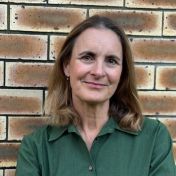Saving for a home loan deposit can be a big early hurdle in the home-buying journey, but you've got to start somewhere.
Finding a monetary goal to keep in sight can be half the battle in putting together the deposit needed for a home loan, so let's talk dollars.
How much do you need for a house deposit in 2025?
A home loan deposit is the amount of money you contribute to the purchase price of a property. It typically ranges from 5% to 20% of a home's purchase price.
The amount required will depend on the lender you choose. Many traditional lenders ask borrowers to have a deposit of 20% of the purchase price, although some will be willing to accept homebuyers with deposits as small as 5%. Generally, having a deposit of at least 20% means you won't be required to pay for Lenders Mortgage Insurance (LMI).
LMI is an insurance policy paid for by the borrower that protects their lender should they default on their home loan. Borrowers who have a deposit of at least 20% of the property's purchase price are generally exempt from paying it.
Some lenders may not require borrowers with a deposit of less than 20% to pay for LMI, depending on their lending policies and the borrower market they're targeting. From time to time, other lenders may advertise LMI waivers as part of a promotion or special offer.
See also: Are you eligible for an LMI waiver?
Home deposit guide: 2025
While it's generally recommended for a homebuyer to have at least a 20% deposit saved, it can take considerable time to put this amount aside. For some would-be buyers, it may be more feasible to save a smaller deposit and pay LMI to get into the property market sooner. This can particularly be the case in a fast-rising housing market.
See also: Can you buy a home without a deposit?
It's also worth mentioning here there are several government schemes that help people with low deposits get into a home sooner, which we'll also look at in more depth below.
Here's how much you would need for a deposit for each capital city in Australia, as of September 2025, depending on your ideal loan-to-value ratio (LVR):
| Capital City | Median Price | 5% Deposit (95% LVR) | 10% Deposit (90% LVR) | 15% Deposit (85% LVR) | 20% Deposit (80% LVR) |
|---|---|---|---|---|---|
| Sydney | $1,224,341 | $61,217 | $122,434 | $183,651 | $244,868 |
| Melbourne | $803,194 | $40,159 | $80,319 | $120,472 | $160,638 |
| Brisbane | $949,583 | $47,479 | $94,958 | $142,437 | $189,916 |
| Adelaide | $851,125 | $42,556 | $85,112 | $127,668 | $170,225 |
| Perth | $841,928 | $42,096 | $84,192 | $126,289 | $168,384 |
| Hobart | $680,315 | $34,015 | $68,031 | $102,051 | $136,063 |
| Darwin | $553,131 | $27,656 | $55,313 | $82,969 | $110,626 |
| Canberra | $872,957 | $43,647 | $87,295 | $130,943 | $174,591 |
| LMI Required? | Yes | Yes | Yes | No | |
Source: Median prices per CoreLogic Home Value Index results as of 1 September 2025
It's important to remember that your deposit doesn't include all the other related costs that come with buying a house, including:
-
LMI (where applicable)
-
Stamp duty (our stamp duty calculator can help you estimate how much you will need to pay)
-
Valuation fees
-
Other costs you may incur
Depending on your circumstances, these fees and charges can add tens of thousands of dollars to the cost of purchasing a home, making that first hurdle to ownership that much higher.
How do I work out how much I need to save for a deposit?
Simply put, the larger the deposit you can come up with, the smaller your home loan will be. Different lenders have different measures of assessing home loan affordability and your ability to make your repayments.
One rule of thumb is that the amount of debt you have shouldn't exceed more than six times your gross annual income (that is, before tax). For example, someone who earns a gross annual income of $65,000 should be looking at properties priced in the $390,000 range, which doesn't buy much in today's market for a single income-earner.
Another rule of thumb when it comes to debt is that households shouldn't be paying more than 30% of their gross annual income on servicing a home loan. When they exceed this amount, a borrower is said to be in mortgage stress. It's not a position you want to be in when you're just starting out as a homeowner.
See also: How much of your income should you spend on a mortgage?
Of course, these are rough guides only. Our borrowing power calculator can give you some idea of how much you can afford to borrow.
Is it worth paying LMI to get into the market sooner?
In some cases, would-be home buyers may decide saving a 20% deposit is a bridge too far, particularly if home values are racing ahead while their wage growth remains steady. It may be better for some to secure their place in the market with the deposit they've managed to save and pay for LMI. This will see them in the market for a low deposit home loan, which can present a viable path to homeownership.
Many of these loans will require the borrower to pay for LMI, although how much it costs will depend on the amount they've managed to save for their deposit and the value of their property. In theory, the larger the deposit, the lower the cost of the insurance should be.
Our lenders mortgage insurance calculator can provide an estimate of how much you might be up for based on the property's value, the loan amount, and whether you're a first home buyer.
| Property price | 5% deposit | Upfront LMI Estimate | 10% deposit | Upfront LMI Estimate | 15% deposit | Upfront LMI Estimate |
|---|---|---|---|---|---|---|
| $400,000 | $20,000 | $15,428 | $40,000 | $6,552 | $60,000 | $3,390 |
| $600,000 | $30,000 | $31,008 | $60,000 | $9,828 | $90,000 | $5,100 |
| $800,000 | $40,000 | $41,344 | $80,000 | $14,400 | $120,000 | $6,800 |
| $1,000,000 | $50,000 | $51,680 | $100,000 | $20,790 | $150,000 | $10,115 |
Source: YourMortgage lenders mortgage insurance calculator
Bear in mind, the above figures are a guide only. How LMI is calculated varies between lenders and insurers and may depend on a number of other factors.
Can I avoid paying for LMI even if I have a smaller deposit?
There are several government incentives and initiatives that make it possible for eligible first home buyers to purchase a property with a smaller deposit and avoid LMI.
The federal government's Home Guarantee Scheme offers support for first home buyers, regional first home buyers, and eligible single parents. Find more details on the scheme below.
Most state and territory governments also offer First Home Owner Grants as well as stamp duty concessions and exemptions.
The First Home Guarantee (FHBG)
This allows eligible first home buyers to purchase a home with a deposit as low as 5% without paying for LMI, with the government effectively guaranteeing up to 15% of the value of the home. The scheme can be used for new and existing homes, and property price caps apply.
The Family Home Guarantee (FHG)
Allows eligible single parents to build or buy a home with a deposit as low as 2% and avoid the cost of LMI, with the government guaranteeing up to 18% of the property value. A maximum annual income cap of $125,000 applies.
Guarantor loans
Another option to secure a home loan with a smaller deposit and avoid LMI is to take out the loan with a guarantor - essentially a person or persons who promises to take over the loan in the event you can't meet your repayments.
A guarantor may offer additional security towards the loan, commonly in the form of equity in their own property. In the eyes of the lender, this makes a home loan far less risky and often averts the need to pay for LMI. It may also give you access to a lower interest rate.
Of course, there are considerable risks associated with being a guarantor and these need to be carefully considered by all parties. But generally, guarantors don't stay attached to a home loan for the term of the loan and can be removed after the borrower pays off a requisite portion of the loan.
See also: How to avoid paying lenders mortgage insurance (LMI)
How to save up for a house deposit
If you're serious about saving for a deposit, it's important you come up with a plan for how you can effectively put money aside for it. Here are some useful strategies:
Pay off your existing debts
Settling all your existing debts, especially credit card debt or other high-interest loans, will make saving for a deposit much easier. Concentrate on paying those off first and once they're cleared, make a budget to put funds aside regularly for a home loan deposit.
Paying down any existing debts also boosts your chances of getting approved for a home loan and securing it at a competitive rate
See also: How your credit cards could impact your home loan
If you think it's going to be difficult to settle all your existing debts at once, you could consider consolidating them into a single loan facility with a lower interest rate. This can effectively reduce your monthly debt repayments, enabling you to put more towards a deposit.
Allocate savings from every payday
One of the most common ways people save for a home deposit is to set money aside from their fortnightly or monthly pay in a high interest savings account. It could be a good idea to set up a direct payment with your employer so the funds go straight into your savings account.
Even a modest amount set aside from each pay will add up over time. To supercharge your balance, put any tax refunds, commissions, or bonuses straight into the account so you're not tempted to spend them.
Cut back on extra expenses
There are many ways to reduce your day-to-day expenses. It can be as simple as making your daily coffees instead of buying them, switching to cheaper grocery brands, taking your lunch to work, cooking at home instead of eating out, purchasing second-hand items instead of buying from retailers. The measures don't have to be draconian - mindfulness is key.
Reach out to a broker
Before diving into the market and looking at prospective properties, it's wise to determine how much you'll feasibly be able to contribute as a deposit and the size of the mortgage you'll be able to afford. Calculating the other costs associated with getting a home loan is also crucial.
It can be wise to consult a mortgage broker with specialist knowledge of the home loan market who can examine your finances, explain your options to you, and help you find the best mortgage for your particular circumstances. You can find a mortgage broker in your area or ask friends and family if they have any recommendations.
See also: First Home Buyer Guides
Research the market
It always pays to be forearmed with as much knowledge of the market as you can gather. The table below features some of the most competitive home loan interest rates on the market and is a good place to start.
| Lender | Home Loan | Interest Rate | Comparison Rate* | Monthly Repayment | Repayment type | Rate Type | Offset | Redraw | Ongoing Fees | Upfront Fees | Max LVR | Lump Sum Repayment | Extra Repayments | Split Loan Option | Tags | Features | Link | Compare | Promoted Product | Disclosure |
|---|---|---|---|---|---|---|---|---|---|---|---|---|---|---|---|---|---|---|---|---|
5.29% p.a. | 5.33% p.a. | $2,773 | Principal & Interest | Variable | $0 | $530 | 90% |
| Promoted | Disclosure | ||||||||||
5.19% p.a. | 5.10% p.a. | $2,742 | Principal & Interest | Variable | $0 | $0 | 80% |
| Disclosure | |||||||||||
5.39% p.a. | 5.43% p.a. | $2,805 | Principal & Interest | Variable | $0 | $530 | 90% |
| Promoted | Disclosure |
Image by Brano on Unsplash.
Original article by Gerv Tacadena in February 2022.
First published in November 2024
Collections: First Home Buyer Low deposit home loans






Share